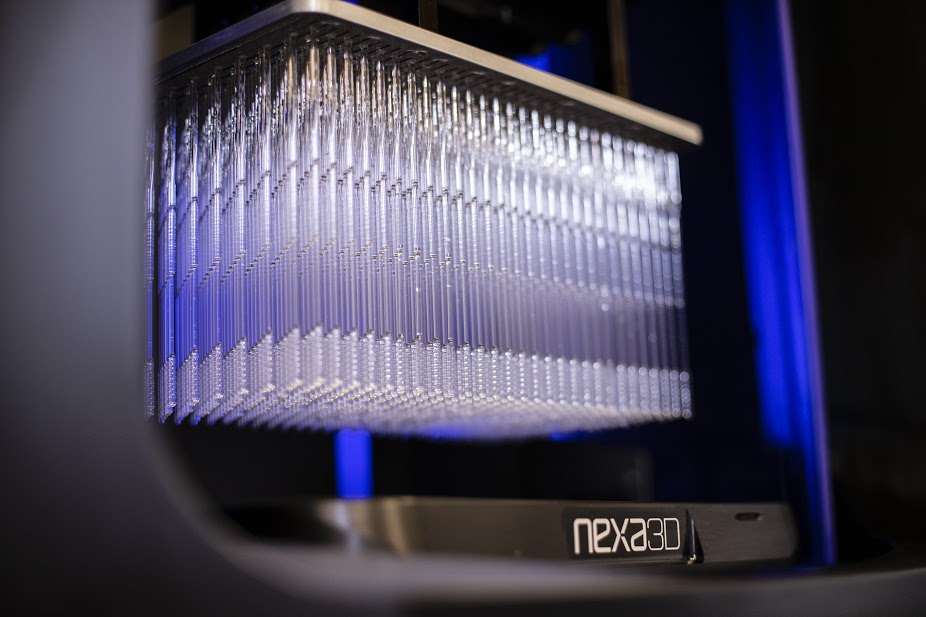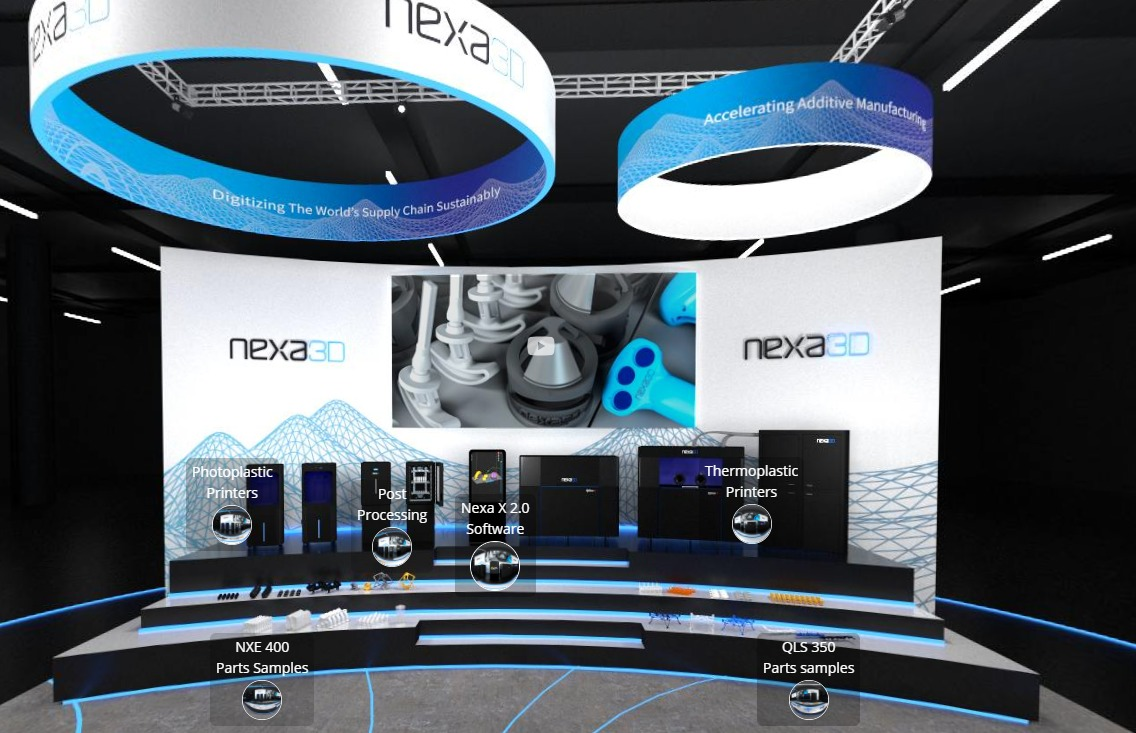When it comes to venture investments and exponential technologies, serial entrepreneur Avi Reichental has created brands and reinvigorated digital manufacturing, helping shape the narrative of what people think when they hear about 3D printing. Once the CEO of 3D Systems, Reichental left the leading 3D printer provider in 2015 after a 12-year tenure and revenue growth exceeding six-fold. Since then, he has been creating and leading tech startups, advising companies, and pioneering 3D printing innovations.
As co-founder and CEO of Nexa3D, a manufacturer of ultrafast polymer 3D printers, Reichental described the company as his “crown jewel,” one that he hopes to scale to its full potential. Talking to 3DPrint.com after the highly anticipated 2020 Formnext Connect event came to an end, Reichental looked back at what it has been like to navigate in the midst of a global pandemic, as well as what lies ahead for the company and the 3D printing industry.
How has the COVID-19 pandemic impacted Nexa3D operations?
Since COVID-19 began disrupting our economy and our safety, we decided to use the time to accelerate innovation. If there ever was a time to see the 3D printing industry shine, it was 2020. The entire industry sprang into action in the early stages of the pandemic, manufacturing everything that the traditional supply chain was unable to provide because it was complex and broken. Initially, Nexa3D also supported local communities by manufacturing critical products for essential needs. Then, we started collaborating with other companies which allowed us to bring to market, very quickly, more than half a dozen materials. But what was really incredible is that during this time, we shipped 70 new printers. We quickly realized that businesses needed to augment their production, like medical and consumer products, many automotive and tier-one suppliers, service bureaus, and transportation or mobility companies. There is a very broad range of companies that decided not to slow down during COVID-19, looking at this as an opportunity to step up their R&D investment because they want to be ready, sharper, and more competitive when the pandemic disruption comes to an end.
What was the installation process like for Nexa3D machines?
During the COVID-19 months, we couldn’t send field engineers or commissions to the marketplace, which forced us to virtualize all of our operations. We were able to do virtual installations for dozens of customers, and even at Formnext Connect, Nexa3D created a beautiful and interactive exhibition booth, thinking of innovation not just on the product, material, and software side, but also on the business model. This is very important because, through all these available virtual tools, we are able to do things that we didn’t even imagine a year ago. This period really acted as a catalyst to accelerate the adoption of remote and virtual tools. Best of all, Nexa3D is showing that it can scale, grow, and succeed during a very challenging period. It is not trivial to grow a business in the best of times, it is much harder to do it when times are bad.
Where does Nexa3D stand in the journey to encourage the adoption of additive manufacturing (AM) technology?
When I think about the future of AM, all of us at Nexa3D are taking significant steps from the desktop and the workshop to the production shop, taking some of the pain points out, having the ability to stimulate and to track the entire workflow with predictability and to provide the necessary quality assurance to let users know that every part and every printer will give them repeatability in performance and acceptable yields.
How do you do that and accelerate the adoption of 3D printing?
It has a lot to do with collaboration, and that is why we invited the best companies to work with us, to unleash the full capabilities of their materials, resins and powders. We began to reach out to collaborators on the software side as well, because we think that to a large extent, the future of AM will depend on the greater process and geometrical computation, and having the right process and geometrical algorithms that can monitor, improve, predict and stimulate the outcome is another great opportunity to scale AM into production.
Are collaborations key to the evolution of AM?
I don’t think there is a single entity or player that can make everything happen by themselves. For many years, as the CEO of 3D Systems, I tried to do everything within the company, and that was a good strategy for the early 2000’s and until 2012, but it is not a good strategy today. What we all need to realize is that the future is faster than we think; disruption and new technologies are happening at exponential speeds; we live in a world with infinite computing power in the cloud, and we have access to other exponential technologies that are relevant to AM. The rate and pace of technology and innovation are such that for companies to thrive, they have to be able to convene to tap into their potential. I don’t believe that a single player can do everything, regardless of how much resources they have. For Nexa3D, this has become a core fundamental enabler, our rapid rate of new product developments is just a testament to this core belief. Our collaboration strategy is really scaling and I hope more companies will join in because by doing this we are extending the addressable AM market by orders of magnitude.

Nexa3D and Henkel’s new xMED412 for producing testing swabs to detect COVID-19. Image courtesy of Nexa3D/Trinity Wheeler Photography
How is 3D printing evolving?
Historically, we used to think it was only about materials and hardware. Today, we understand that there is also a seamless digital thread that simulates, predicts, controls, and assures quality and capability. It is also important to apply circular economic principles to what we do. For many years we have described AM as instinctively sustainable, but we don’t have the data to prove it. So, at Nexa3D, along with our partners and collaborators, we are going to begin to apply circular economy principles in what we do. Starting by measuring what is really important: the input power that goes into a printed part; the scrap and yield; how to combine parts to reduce the overall complexity of the supply chain and the carbon footprint, and how to generate data that influences not only the design and delivery of parts but how customers think about additive as part of their own circular economy strategies. Those are some of the background reasons of why we decided to step up innovation and expand collaborations and really use COVID as a season to move our capabilities forward. As an industry, the pandemic validated our key value proposition in the marketplace, which is mainly agility, flexibility, and tool-less manufacturing.
What fields can Nexa3D help advance?
First and foremost, I consider Nexa3D can impact the future of product design and manufacture in medical and dental applications. Followed by bespoke higher performance footwear. When I think about how many pairs of shoes an average person goes through in a year, how uncomfortable they are, and the complexity and inefficiency of the current production methods, I see a big opportunity to move to highly automated and efficient footwear manufacturing to simplify the supply chain. I also expect Nexa3D could benefit the whole world of oil and gas, energy equipment, as well as aerospace, and defense. There is a particularly big opportunity for drones and robotics, as well as deployment vehicles and launchers for space exploration.
What can we hope to see from Nexa3D in the future?
We just announced the creation of a customer success center in partnership with one of our leading resellers (Disc Direct) in Germany. We already extended our presence in Japan, soon we will be entering the Chinese market, and we just signed up our first reseller partner in Mexico as we begin thinking about a Latam strategy. We expect our value proposition of improving productivity by 20 times and having an end-to-end validated workflow that solves some of the fundamental pinpoints of our industry – basically repeatability, scalability, and acceptable production yields – will help remove the labor intensity out of every step of the AM process.
Subscribe to Our Email Newsletter
Stay up-to-date on all the latest news from the 3D printing industry and receive information and offers from third party vendors.
You May Also Like
3D Printing News Briefs, April 13, 2024: Robotics, Orthotics, & Hypersonics
In 3D Printing News Briefs today, we’re focusing first on robotics, as Carnegie Mellon University’s new Robotics Innovation Center will house several community outreach programs, and Ugogo3D is now working...
Rail Giant Alstom Saves $15M with 3D Printing Automation Software 3D Spark
3D Spark has entered into a three-year deal with the rail giant Alstom. Alstom, a transport behemoth with annual revenues of $16 billion, specializes in the manufacture of trains, trams,...
Meltio Expands Global Reach with New Partnerships in the Americas and Europe
Spanish 3D printing manufacturer Meltio has expanded its sales network across the globe. With the addition of three new partners in the United States, Brazil, Argentina, and Italy, Meltio aims...
3D Printing Webinar and Event Roundup: April 7, 2024
Webinars and events in the 3D printing industry are picking back up this week! Sea-Air-Space is coming to Maryland, and SAE International is sponsoring a 3D Systems webinar about 3D...

































